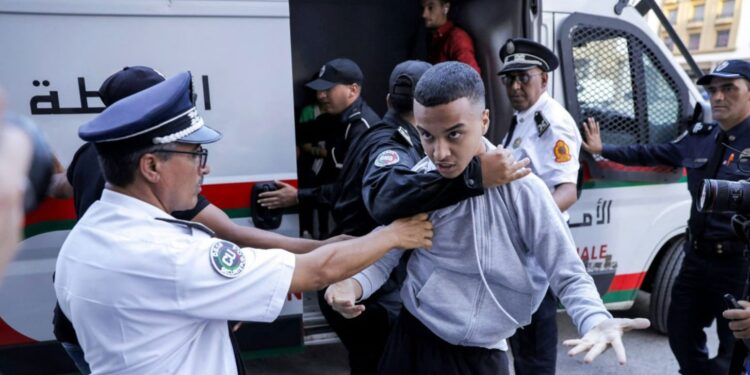For several days, Morocco has lived to the rhythm of an unprecedented protest movement, carried by its youth. From Casablanca to Marrakech, via Rabat and many small towns, thousands of young people descend into the street to denounce the degradation of public services, unemployment and social inequalities.
The drop of water came from Agadir, where eight women died while giving birth in a public hospital. A drama that revealed, in the eyes of opinion, the fragility of the health system. Education is also in the viewfinder of the demonstrators: lack of teachers, dilapidated infrastructure and mediocre results nourish a feeling of abandonment.
To these social crises is added an economic frustration, in particular the massive unemployment of young graduates, as well as a criticism of the government’s budgetary choices. Many are indignant to see the state invest billions in stadiums and infrastructure for the 2030 World Cup, while essential services are sorely lacking in means.
These mobilizations are distinguished by their spontaneity. Organized via Tiktok, Instagram or Discord, they are carried out by collectives such as Genz 212. The movement does not count an identified leader, which makes it difficult to frame.
The protests, peaceful at the start, sometimes degenerated into clashes with the police. In Inzegane, Tiznit and Oujda, public and private buildings were burned, burned vehicles and erect barricades. Police retaliated with firmness, multiplying the arrests.
Official reactions and concerns
The government justifies its economic choices by highlighting the strategy of development and international visibility of Morocco. King Mohammed VI, for his part, recalled that he did not want a “two -speed” Morocco, where social fractures widen between rich and poor, cities and countryside.
But on the ground, anger does not weaken. The Moroccan Association of Human Rights (AMDH) denounces arbitrary arrests and a repression which risks further stirring up the distrust of young people vis-à-vis institutions.








